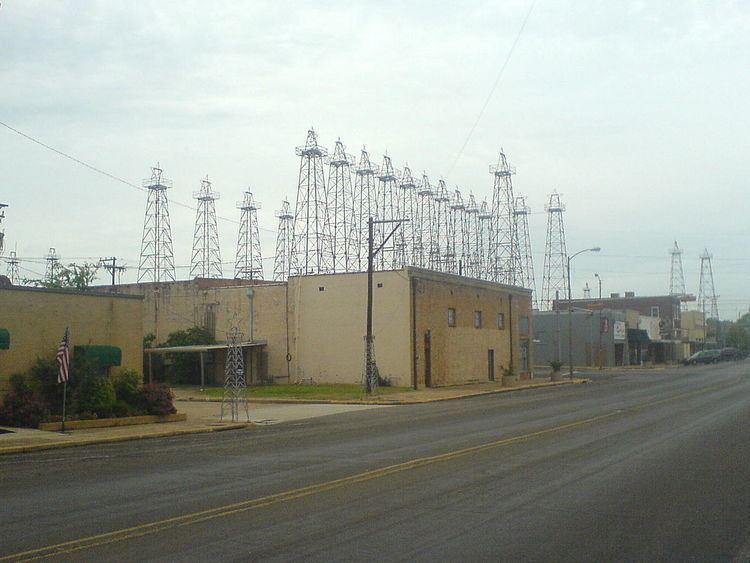 | ||
A boomtown is a community that undergoes sudden and rapid population and economic growth, or that is started from scratch because of an influx of people. The growth is normally attributed to the nearby discovery of a precious resource such as gold, silver, or oil, although the term can also be applied to communities growing very rapidly for different reasons, such as a proximity to a major metropolitan area, huge construction project, or attractive climate.
Contents
First boomtowns
Early boomtowns, such as Leeds, Liverpool, and Manchester, experienced a dramatic surge in population and economic activity during the Industrial Revolution at the turn of the 19th century. In pre-industrial England these towns had been relative backwaters, compared to the more important market towns of Bristol, Norwich, and York, but they soon became major urban and industrial centres. Although these boomtowns did not directly owe their sudden growth to the discovery of a local natural resource, the factories were set up there to take advantage of the excellent Midlands infrastructure and the availability of large seams of cheap coal for fuel.
In the mid-19th century, boomtowns based on natural resources began to proliferate as companies and individuals discovered new mining prospects across the world. The California Gold Rush of the Western United States stimulated numerous boomtowns in that period, as settlements seemed to spring up overnight in the river valleys, mountains, and deserts around what was thought to be valuable gold mining country. In the late 19th and early 20th centuries, boomtowns called mill towns would quickly arise due to sudden expansions in the timber industry; they tended to last the decade or so it took to clearcut nearby forests. Modern-day examples of resource-generated boomtowns include Fort McMurray in Canada, as extraction of nearby oilsands requires a vast number of workers, and Johannesburg in South Africa, based on the gold and diamond trade. The biggest boomtown in the early 21st century is in North Dakota, where oil fields are being exploited.
Attributes
Boomtowns are typically characterized as "overnight expansions" in both population and money, as people stream into the community for mining prospects, high-paying jobs, attractive amenities or climate, or other opportunities. Typically, newcomers are drawn by high salaries or the prospect of "striking it rich" in mining; meanwhile, numerous indirect businesses develop to cater to workers often eager to spend their large paychecks. Often, boomtowns are the site of both economic prosperity and social disruption, as the local culture and infrastructure, if any, struggles to accommodate the waves of new residents. General problems associated with this fast growth can include: doctor shortages, inadequate medical and/or educational facilities, housing shortages, sewage disposal problems, and a lack of recreational activities for new residents.
The University of Denver separates problems associated with a mining-specific boomtown into three categories:
- deteriorating quality of life, as growth in basic industry outruns the local service sector’s ability to provide housing, health services, schooling, and retail
- declining industrial productivity in mining because of labor turnover, labor shortages, and declining productivity
- an underserving by the local service sector in goods and services because capital investment in this sector does not build up adequately
The initial increasing population in Perth, Australia (considered to be a modern-day boomtown) gave rise to overcrowding of residential accommodation as well as squatter populations. "The real future of Perth is not in Perth’s hands but in Melbourne and London where Rio Tinto and BHP Billiton run their organizations", indicating that some boomtowns’ growth and sustainability are controlled by an outside entity.
Boomtowns are typically extremely dependent on the single activity or resource that is causing the boom (e.g., one or more nearby mines, mills, or resorts), and when the resources are depleted or the resource economy undergoes a "bust" (e.g., catastrophic resource price collapse), boomtowns can often decrease in size as fast as they initially grew. Sometimes, all or nearly the entire population can desert the town, resulting in a ghost town.
This can also take place on a planned basis. Since the late 20th century, mining companies have developed temporary communities to service a mine-site, building all the accommodation shops and services, using prefabricated housing or other buildings, making dormitories out of shipping containers, and removed all such structures as the resource was worked out.
